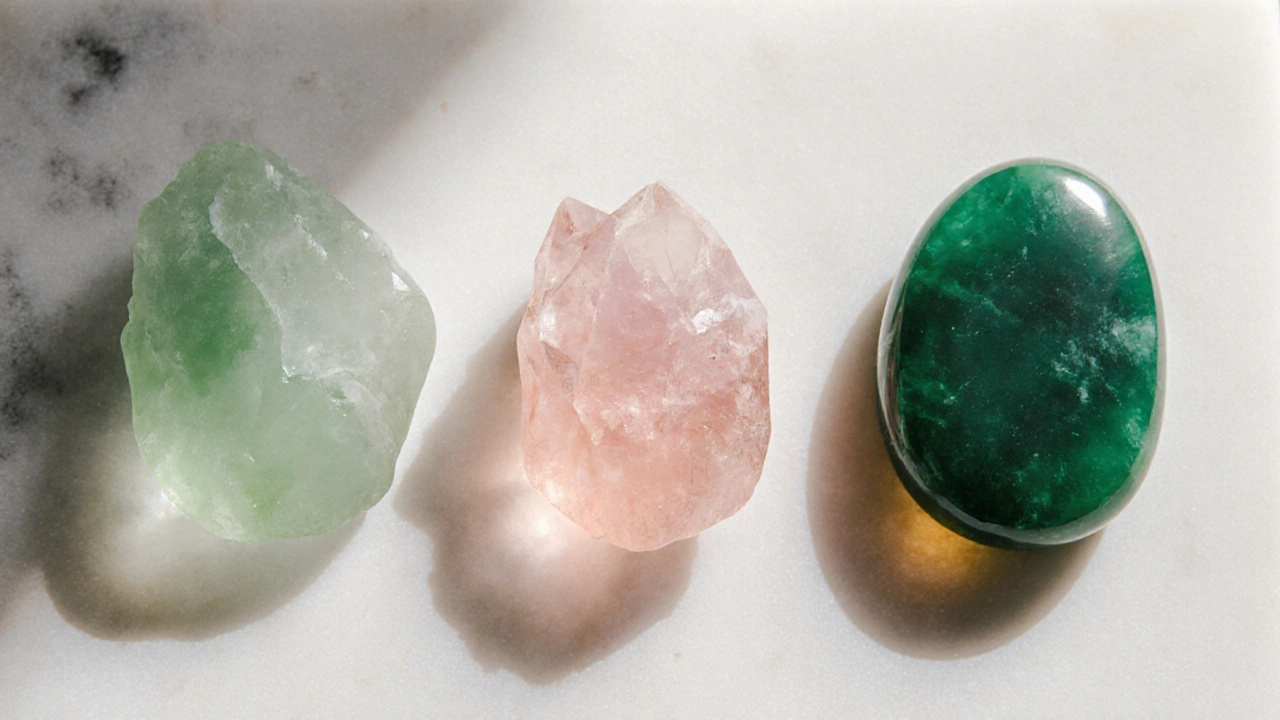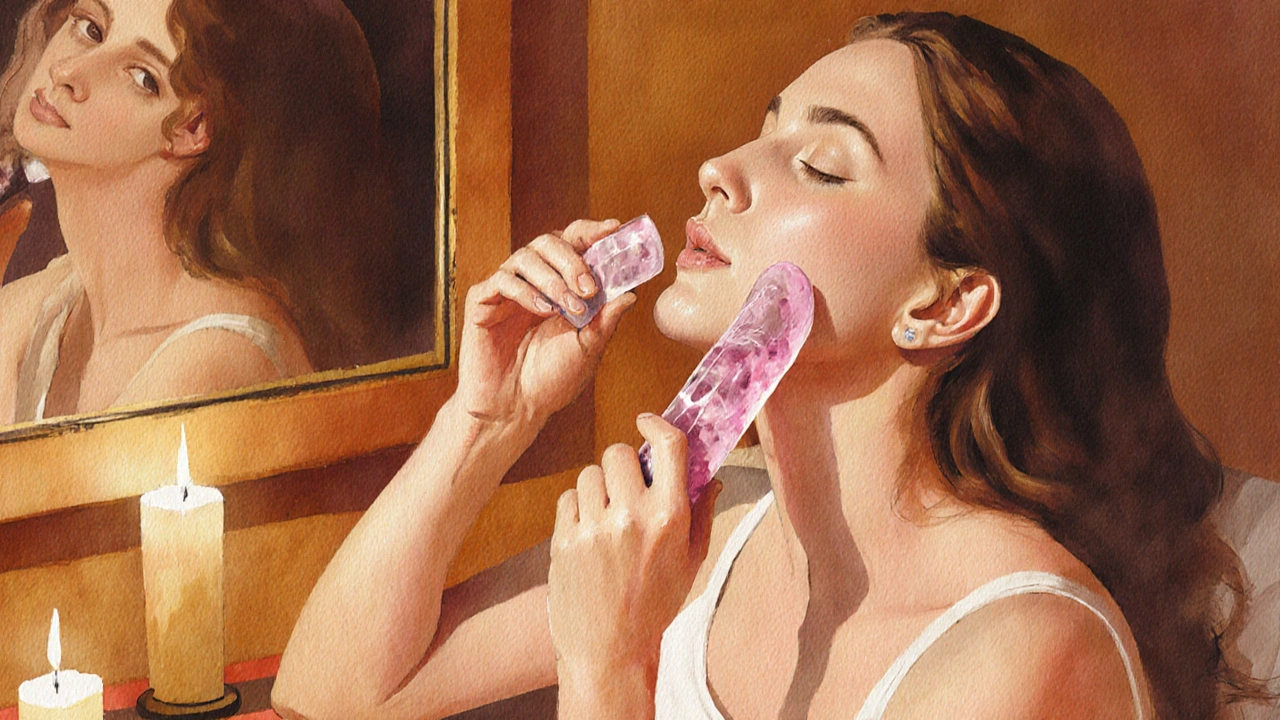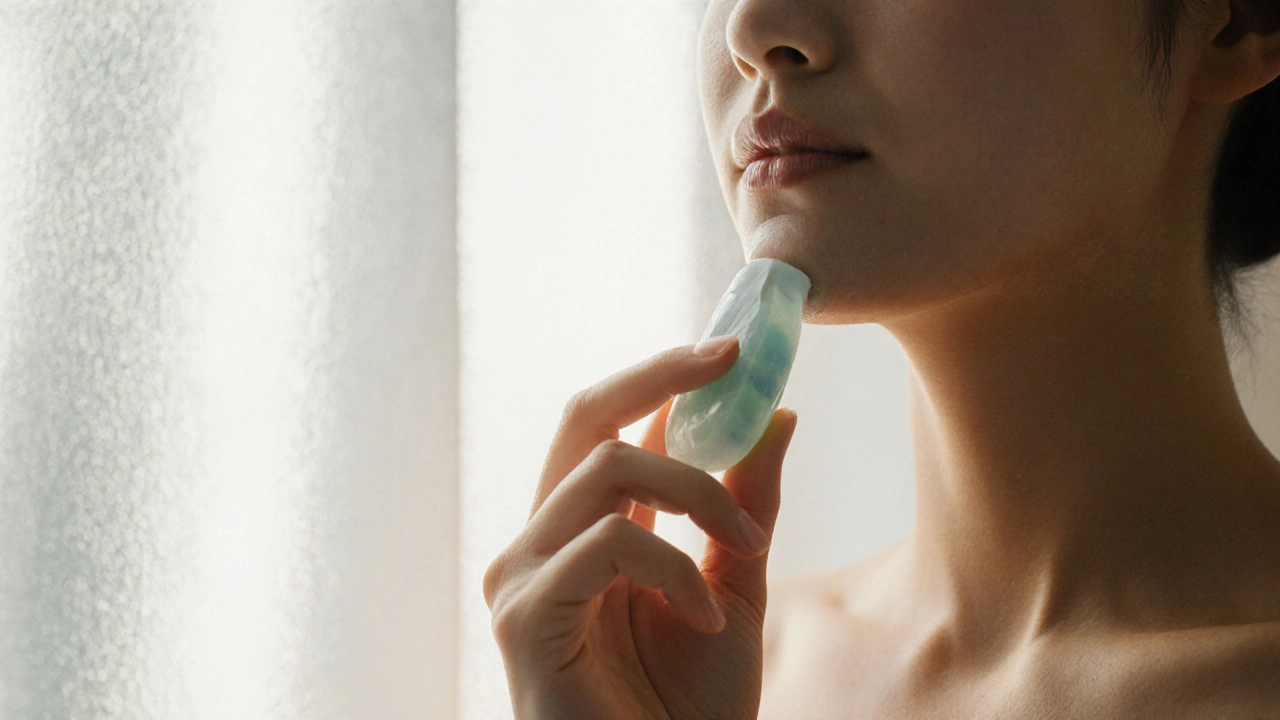Gua Sha Pressure Guide
How Much Pressure is Safe?
The article emphasizes: "Use light pressure" to avoid bruising. This tool shows your safe pressure range based on skin type.
Pressure Impact Assessment
4/10
Safe range for your skin typeSafe! You're in the recommended zone
Why This Matters
- 1 Article Reference: "The goal is to feel a gentle stretch, not a deep tissue massage. Too much force can cause bruising."
- 2 Research Insight: Excessive pressure can damage capillaries and reduce microcirculation benefits
- 3 Pro Tip: Always test pressure on your neck first - it's the thickest skin area
Gua Sha is a traditional Chinese facial technique that uses a smooth stone tool to glide over the skin, stimulating circulation and releasing tension. When you rub the stone along specific pathways, the tiny pressure waves act like a mini‑massage, encouraging fresh blood flow and helping lymphatic fluid move out of the face. In plain English, it’s a simple, drug‑free way to boost radiance and reduce puffiness.
Why Gua Sha Works for Skin Revitalization
First off, the gentle scraping motion triggers the body's natural healing cascade. Tiny capillaries expand, bringing oxygen‑rich blood to the surface. More oxygen means more collagen production, which in turn firms the skin and softens fine lines. At the same time, the technique nudges the lymph system to drain excess fluid, so you notice less "morning puffy face".
Second, the ritual itself is calming. The rhythmic glide releases endorphins, the feel‑good hormones, which can lower cortisol. Lower stress equals fewer breakouts and a smoother complexion. In short, Gua Sha combines physical and biochemical benefits without any chemicals.
Choosing the Right Gua Sha Tool
Not all stones are created equal. The most common materials are jade, rose quartz, and Bian (a type of nephrite). Below is a quick side‑by‑side look.
| Stone | Hardness (Mohs) | Heat Retention | Typical Price (AUD) | Best For |
|---|---|---|---|---|
| Jade | 6-7 | Low | 35-50 | Everyday use, cool glide |
| Rose Quartz | 7 | Medium | 40-60 | Gentle massage, soothing pink hue |
| Bian (Nephrite) | 6-6.5 | High | 70-100 | Deep tissue work, warm after hand‑warming |
Whatever stone you pick, make sure the surface is smooth and free of cracks. A cracked edge can snag delicate skin and cause micro‑tears.

Step‑by‑Step Facial Gua Sha Routine
- Prep the skin. Cleanse with a gentle cleanser, then apply a thin layer of serum or moisturizer. The slip helps the stone glide without pulling.
- Warm the stone. Hold the tool in your palm for a minute; the warmth adds a soothing element and opens pores.
- Start at the neck. Using the wider edge, sweep upward toward the jawline in slow, 2‑second strokes. This primes the lymph flow. \n
- Move to the jaw and chin. Angle the stone at 45 degrees and push from the center of the chin outward toward the ear. Repeat three times per side.
- Cheeks and nose. Using the smaller scoop, glide from the nose bridge outward across the cheek. Finish at the temple for a calming effect.
- Forehead. Starting at the center, sweep outward toward each temple. Finish with gentle tapping to stimulate micro‑circulation.
- Finish with a light press. Gently press the stone into the brow ridge for 5 seconds; this releases any lingering tension.
- Seal the routine. Pat in a final layer of moisturizer or a light facial oil to lock in hydration.
Do this routine 3-4 times a week. Over‑use can lead to redness, so listen to your skin.
Pro Tips and Common Pitfalls
- Use light pressure. The goal is to feel a gentle stretch, not a deep tissue massage. Too much force can cause bruising.
- Sanitize the tool. After each session, rinse with warm water and a mild antibacterial soap. Let it air‑dry before storage.
- Combine with serums. Vitamin C or hyaluronic acid serums work best because the increased circulation helps them absorb faster.
- Avoid broken skin. If you have active acne, razor bumps, or eczema flare‑ups, skip the area until it heals.
- Know your skin type. Oily skin may benefit from cooler stones, while dry skin enjoys the slightly warm feel of Bian after hand‑warming.

Science Behind the Glow
Research from the Journal of Cosmetic Dermatology (2023) showed that participants who performed a 5‑minute Gua Sha routine daily for 8 weeks experienced a 12% increase in skin elasticity and a visible reduction in periorbital dark circles. The study linked these changes to enhanced micro‑circulation and improved lymphatic drainage.
Another study from the University of Sydney’s School of Medicine found that the gentle mechanical stimulation raised local levels of interleukin‑6, a cytokine that signals skin cells to produce more collagen and elastin. The result? A firmer, more supple complexion without any invasive procedures.
Frequently Asked Questions
Can I use Gua Sha on a sensitive face?
Yes, but keep the pressure feather‑light and stick to the smoother parts of the stone. Always start with a gentle moisturizer to reduce friction.
How often should I practice Gua Sha?
Three to four times a week is ideal for most skin types. Daily use can be fine if you keep each session under three minutes and use very light strokes.
Do I need a special serum for Gua Sha?
Any lightweight, non‑sticky serum works. Hyaluronic acid and vitamin C are popular choices because the increased blood flow helps them penetrate deeper.
Can Gua Sha help with acne scars?
Regular use can improve scar texture by encouraging collagen remodeling, but it won’t erase deep pits overnight. Pair it with a scar‑targeting cream for best results.
Is Gua Sha safe during pregnancy?
The technique is gentle, but many practitioners advise avoiding the facial area if you’ve experienced severe morning sickness or facial swelling. Consult your healthcare provider if you’re unsure.
If you stick to the basics, stay consistent, and choose a quality stone, you’ll notice smoother, brighter skin in just a few weeks. The real magic lies in the ritual - a moment of self‑care that transforms both how you look and how you feel.

